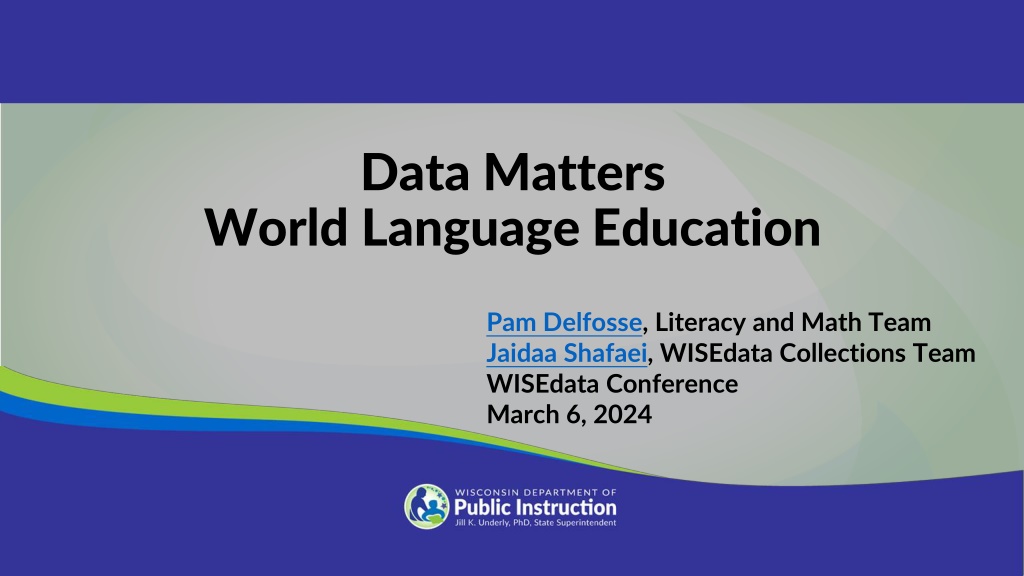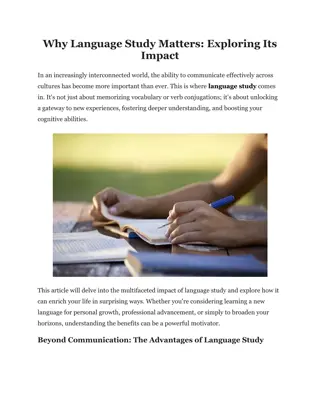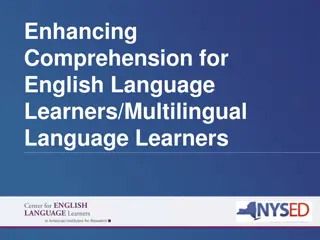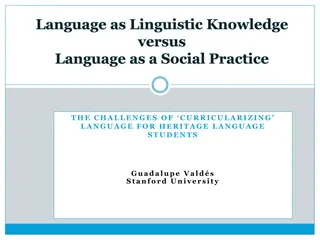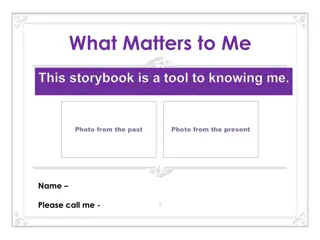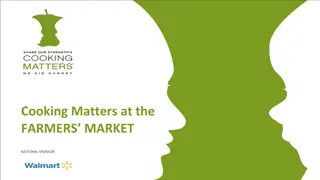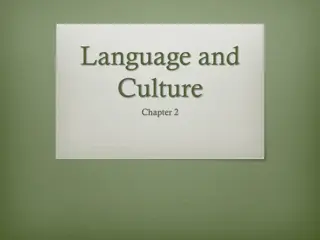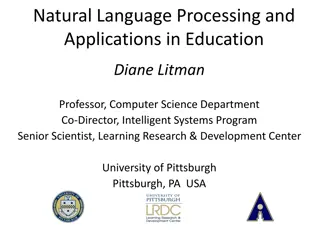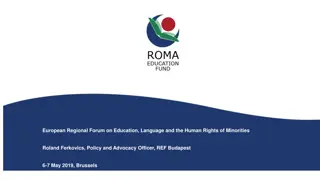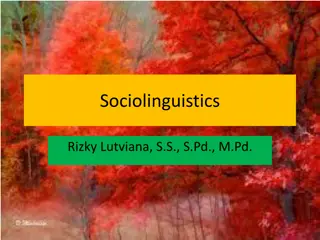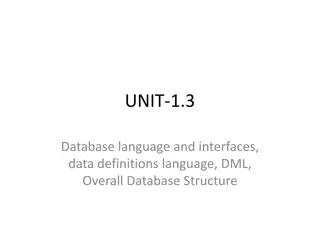Data Matters World Language Education.
Explore the latest initiatives and trends in World Language Education in Wisconsin, focusing on data impact, cultural acknowledgments, Indigenous languages, Hmong language programs, and new roster codes for 2024. Learn about data usage, statutory compliance, program development, and more. Dive into the comparative data review highlighting enrollment trends over the years.
Download Presentation

Please find below an Image/Link to download the presentation.
The content on the website is provided AS IS for your information and personal use only. It may not be sold, licensed, or shared on other websites without obtaining consent from the author.If you encounter any issues during the download, it is possible that the publisher has removed the file from their server.
You are allowed to download the files provided on this website for personal or commercial use, subject to the condition that they are used lawfully. All files are the property of their respective owners.
The content on the website is provided AS IS for your information and personal use only. It may not be sold, licensed, or shared on other websites without obtaining consent from the author.
E N D
Presentation Transcript
Data Matters World Language Education Pam Delfosse, Literacy and Math Team Jaidaa Shafaei, WISEdata Collections Team WISEdata Conference March 6, 2024
Session Goals Session Goals Communicate impact of world language data Share data trends Improve data fidelity Share guidance and examples Address questions Identify areas for support
Land and Language Acknowledgement Land and Language Acknowledgement The Wisconsin Department of Public Instruction acknowledges and honors the linguistic and cultural heritage, and inherent sovereignty, of the American Indian Nations of Wisconsin. Tribal Nations of Wisconsin
Six Indigenous Languages of WI Six Indigenous Languages of WI Hocak (Ho-Chunk) American Indian Studies Resources Ojibwe Oneida Menominee Waadookodaading Ojibwe Language Immersion School Mohican Potawatomi
Hmong Language Data in Wisconsin Hmong Language Data in Wisconsin I feel more confident talking about Wisconsin Life: Hmong Culture myself I feel like I can show my Hmong, instead of holding it in. ~Ani (Student within Hmong Language and Culture Enrichment Program)
New Roster Codes for 2024 New Roster Codes for 2024- -25 25 In addition to the five course codes for Hmong and Indigenous Languages, we have introduced four additional options, mirroring other prevalent World Languages (WL) courses. Conversation and Culture Native Speakers Immersion Young Learners
Data Use Data Use Statutory compliance Program development Research Access and innovation Policy and budget Teacher recruitment and retention Workforce development
World Language Data: Trends & Implications World Language Data: Trends & Implications Comparative Data Review 2012-2013, 2017-2018, 2022-2023 Significant declines in high school student enrollments Higher enrollment rates by students of color Enrollment declines by economically disadvantaged youth Reduced access to learning languages other than Spanish Improved rate of LEA data reporting!
WL vs LIEP Programs WL vs LIEP Programs World Language Education Program Models Language Instructional Education Programs (LIEP) Educational programs and learning environments that are focused on developing language, intercultural and global competence in Languages other than English (LOTE). Student learning is anchored in the Wisconsin Standards for World Languages. The Elementary and Secondary Education Act (ESEA) specifically defines a LIEP as an instructional education program: (A) in which a limited English proficient child is placed for the purpose of developing and attaining English proficiency, while meeting challenging state academic content and student academic achievement standards, as required by section 1111(b)(1); and (B) that may make instructional use of both English and a child s L1 to enable the child to develop and attain English proficiency and may include the participation of English proficient children if such course is designed to enable all participating children to become proficient in English and a second language (L2). Student learning is anchored in the WIDA English Language Proficiency Standards and often includes content area standards.
English Learners in World Language Programs English Learners in World Language Programs Programs through which English Learners are accessing English Language Services are LIEPs, not world language programs. English Learners may also be enrolled in a world language program. Somali speaking EL in an ESL LIEP and also taking Chinese as a World Language Spanish speaking EL in an ESL LIEP and also enrolled in a Spanish for Native/Heritage Speakers World Language program French speaking EL in an ESL LIEP and also enrolled in a Secondary World Language French AP class
World Language Learners World Language Learners in Bilingual Programs in Bilingual Programs Students who are not ELs, but who are enrolled in a bilingual education LIEP, are reported using world language program data. Former EL who continues to learn within a two-way dual language program Native English speaker who is enrolled in a two-way dual language program along with EL peers Student who is not an EL and whose home/heritage language is used within a dual language program
Common WL Codes for Former ELs & Common WL Codes for Former ELs & Simultaneous Bilinguals Simultaneous Bilinguals One-Way Dual Language Education Program OWDL Two-Way Dual Language Education Program DLTW Dual Language Education Developmental Bilingual - Heritage Learners DLDB- HL
LIEP or World Language Program? LIEP or World Language Program? Program Data Quiz: 1.Is the program providing English language development to English Learners? 2.Is the program designed to support access to subject matter learning in Languages other than English (LOTE)? 3.Is the student a non-EL or former EL? 4.Is the primary or sole goal of the program to develop or sustain proficiency in LOTEs for second language learners?
Relevant Statutes and Rules Relevant Statutes and Rules Access to world language education beginning in grade 7 and through grade 12 is required by State Statute 121.02(1)(L)/5 State Administrative Rules require instruction with frequency and duration needed to realize the objectives of a sequential standards-based curriculum. PI8.01(L) 4/6 World Language Education Rules and Recommendations
World Language Data Elements World Language Data Elements Course Codes (/courseOffering) World Language Program (/section) Language of Instruction (/section) Learners (/studentSectionAssociation)
Link to World Language Program Types Link to World Language Program Types Exploratory World Language (PK-6) EXWL Elementary School World Language ESWL Content-Based World Language (PK-6) CBWL One-Way Dual Language Education OWDL Two-Way Dual Language Education (Non-ELs in bilingual LIEP) DLTW Secondary Level World Language (6-12) WLSL Heritage Learner World Language HLWL American Indian Language AIWL Facilitated World Language Study FWLS
Language of Instruction Language of Instruction Language used for teaching and learning within the course Course-level data element English as default Language of Instruction Data Element Page
Language of Instruction in WISEdata Portal Language of Instruction in WISEdata Portal WISEdata Portal > School Roster Details
Language of Instruction in WISEdata Exports Language of Instruction in WISEdata Exports WISEdata Portal > Exports > Course Offering (Column Z)
WL Program on Student WL Program on Student- -Level vs. Course Level vs. Course- -Level Level LEAs should report the World Language (WL) Program on the course-level (/section). This enables LEAs to submit data for students in a bilingual class, comprising English Learners (EL), non-EL, or former EL students, without the necessity of individually editing each student in the SIS. If a student is enrolled in a section with a WL program reference, DPI will automatically include them in the appropriate WL program at the student level.
WISEdata Validation Messages WISEdata Validation Messages Sending the Course Course sent but using a general WL course code Error 7188 Course sent but no students in WL program across any grade KG-12 Warning 7191 Course sent but linked to an invalid course/WL program and grade level Missing SLWL across any grade level 7-12 Error 7193 SLWL and Grade below 6 Warning 7440 EXWL and grade greater than 6 Warning 7185 Course is Exploration of Multiple World Languages and grade is PK-6, but WL program on is NULL or not EXWL Warning 7477 ESWL and grade greater than 5 Warning 7186 CBWL and grade above 6 Warning 7190 Course is Exploration of Multiple World Languages and grade is 7-12 Warning 7187 FWLS and grade below 9 Warning 7192
WL Program in WISEdata Portal: Roster WL Program in WISEdata Portal: Roster WISEdata Portal > Student Details > Under the Roster panel
WL Program in WISEdata Exports WL Program in WISEdata Exports WISEdata Portal > Exports > Student Section Associations (Column W or X)
Check for Understanding Check for Understanding 1.For whom is LIEP reporting required? 2.May an EL be reported as enrolled in a World Language program? 3.May a native English speaker be reported as enrolled in an LIEP? 4.If a student speaks a language other than English at home, should they be reported as enrolled in an LIEP?
Resources to Learn More Resources to Learn More World Language Education Program Models World Language Programs data element page LIEPs Serving English Learners America s Languages Report Making Languages Our Business Report The Wisconsin Language Roadmap Wisconsin Seal of Biliteracy National Landscape & Seal of Biliteracy Reports
Questions? Questions? Thank you! Thank you! Thank Thank you! you! Please scan the QR code to provide us with Please scan the QR code to provide us with your feedback! your feedback!
